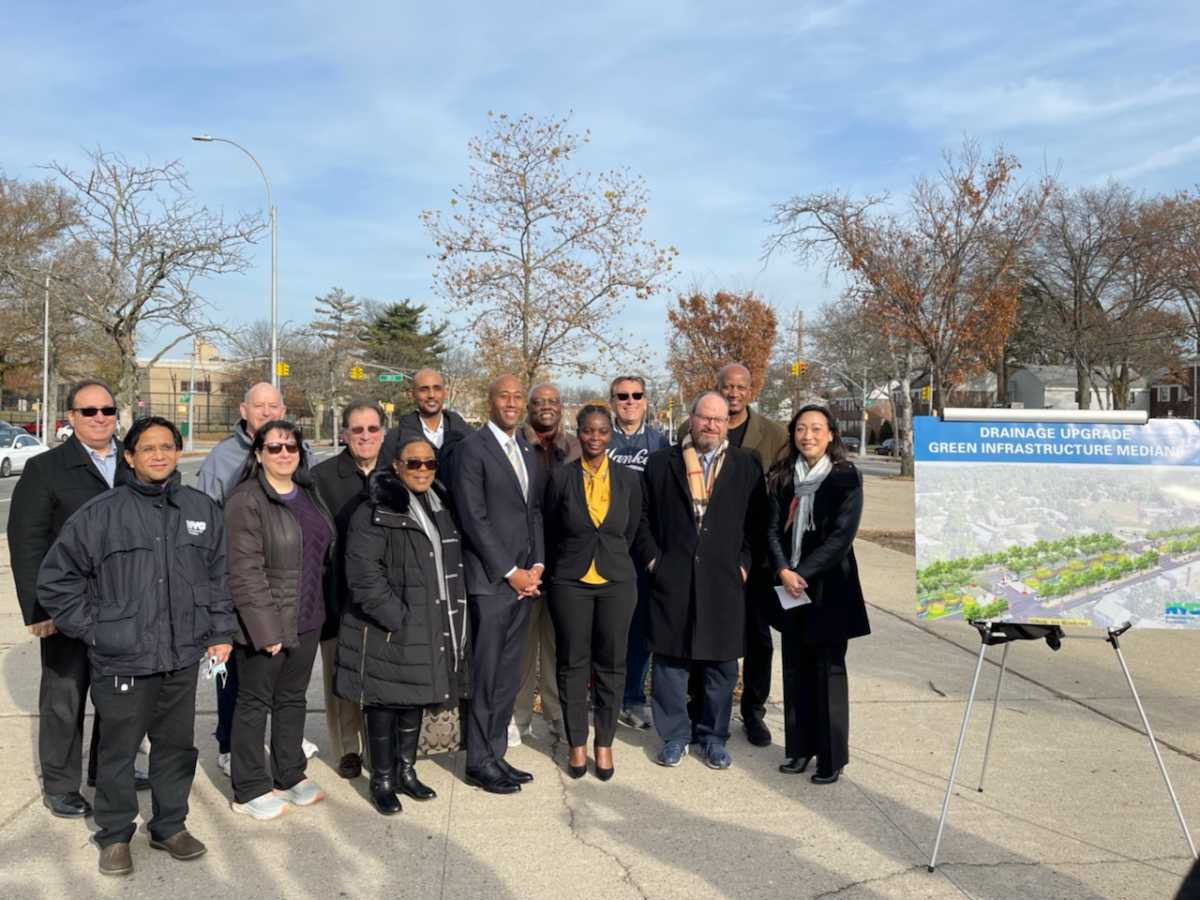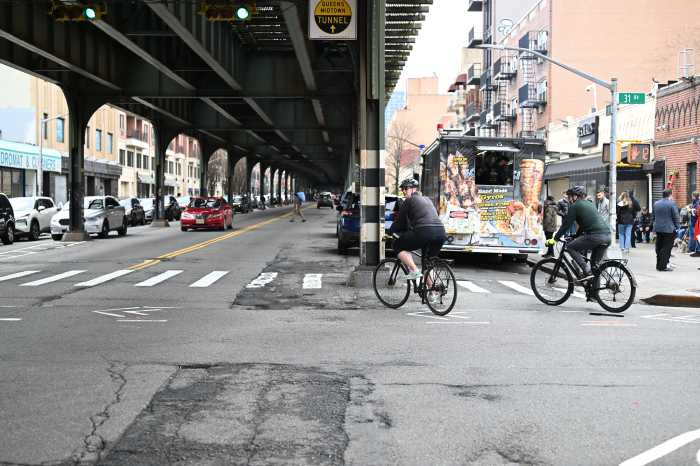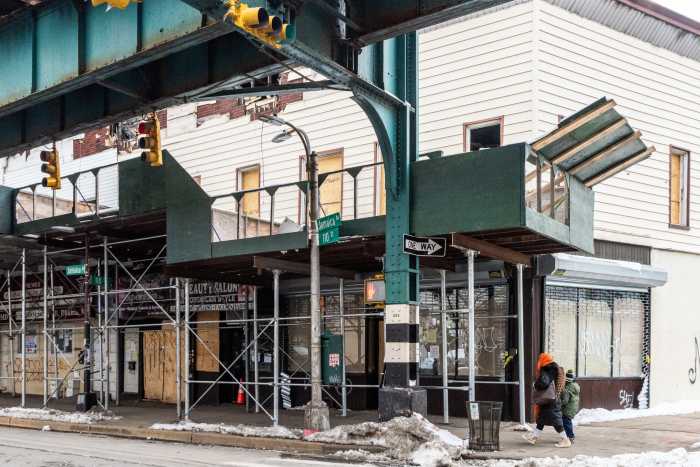Councilman Barry Grodenchik and the Department of Environmental Protection (DEP) Commissioner Vincent Sapienza announced on Wednesday, Dec. 1, plans to transform seven large concrete medians in Queens Village into lush, green drainage spaces to better manage stormwater and reduce neighborhood flooding.
Huge concrete road medians have been a blight on the community for decades, according to Grodenchik. The Rocky Hill Civic Association and the neighboring Bell Park Manor Terrace cooperative apartment complex have long advocated for the beautification of the medians. Both were thrilled with the DEP’s announcement.
“Thanks to the advocacy of the Rocky Hill Civic Association and the Department of Environmental Protection’s commitment to green infrastructure, new plantings will reduce flooding, improve waterways and beautify the streetscape. Most importantly, they will create a cleaner, greener, healthier environment for local residents,” Grodenchik said.
By absorbing a minimum of 5 million gallons of stormwater annually from Hillside Avenue and Winchester Boulevard in the vicinity of Martin Van Buren High School, the green medians will create additional capacity in the neighborhood’s sewer system, helping to reduce local flooding and sewer overflows into Jamaica Bay.
The new drainage spaces will feature native plantings and trees that will lower summer temperatures, improve air quality and provide a habitat for pollinators and other threatened species. The project is estimated to cost approximately $2.5 million.
It is anticipated to break ground in late 2022, and construction will continue for about 12 months.
“Replacing these large concrete medians with natural drainage areas will keep a substantial amount of stormwater out of the sewers serving Queens Village and help to reduce flooding,” Sapienza said. “In just the last several years, we have constructed more than 11,000 green infrastructure assets that beautify neighborhoods, absorb stormwater and reduce sewer overflows, and we will continue to partner with elected officials, community boards, businesses and residents to make our city more resilient to our changing climate.”
In total, nearly three acres, or more than 121,600 square feet, of what is currently impermeable concrete will be rebuilt and optimized with subsurface drainage chambers and engineered rock and soil and planted with ornamental grasses and perennial wildflowers in order to absorb the rain that falls on it and adjacent roadways, or a minimum of 5 million gallons annually.
Additional large concrete medians in Queens will be transformed into resilient green infrastructure medians beginning next year, with other sites in the planning and design stages.
Jainey Bavishi, director of the Mayor’s Office of Climate Resiliency, said fighting climate change means rethinking infrastructure in bold new ways, such as the project in Queens Village.
“By designing new green spaces to combat flooding, we can keep residents safe, better manage stormwater and beautify our neighborhoods all at once,” Bavishi said. “This is how we build a more resilient city for all New Yorkers.”
Following historic record rainfall from the remnants of Hurricane Ida in September that caused severe flooding in parts of the city, NYC Parks Commissioner Gabrielle Fialkoff said it was clear that they needed to find additional ways to keep stormwater from overloading the sewer system.
“That means investing in green infrastructure projects like this one, on our streets, and in our parks,” Fialkoff said. “These trees will not only beautify the streetscape, but will also serve as a powerful tool to protect this community against the effects of climate change.”




































